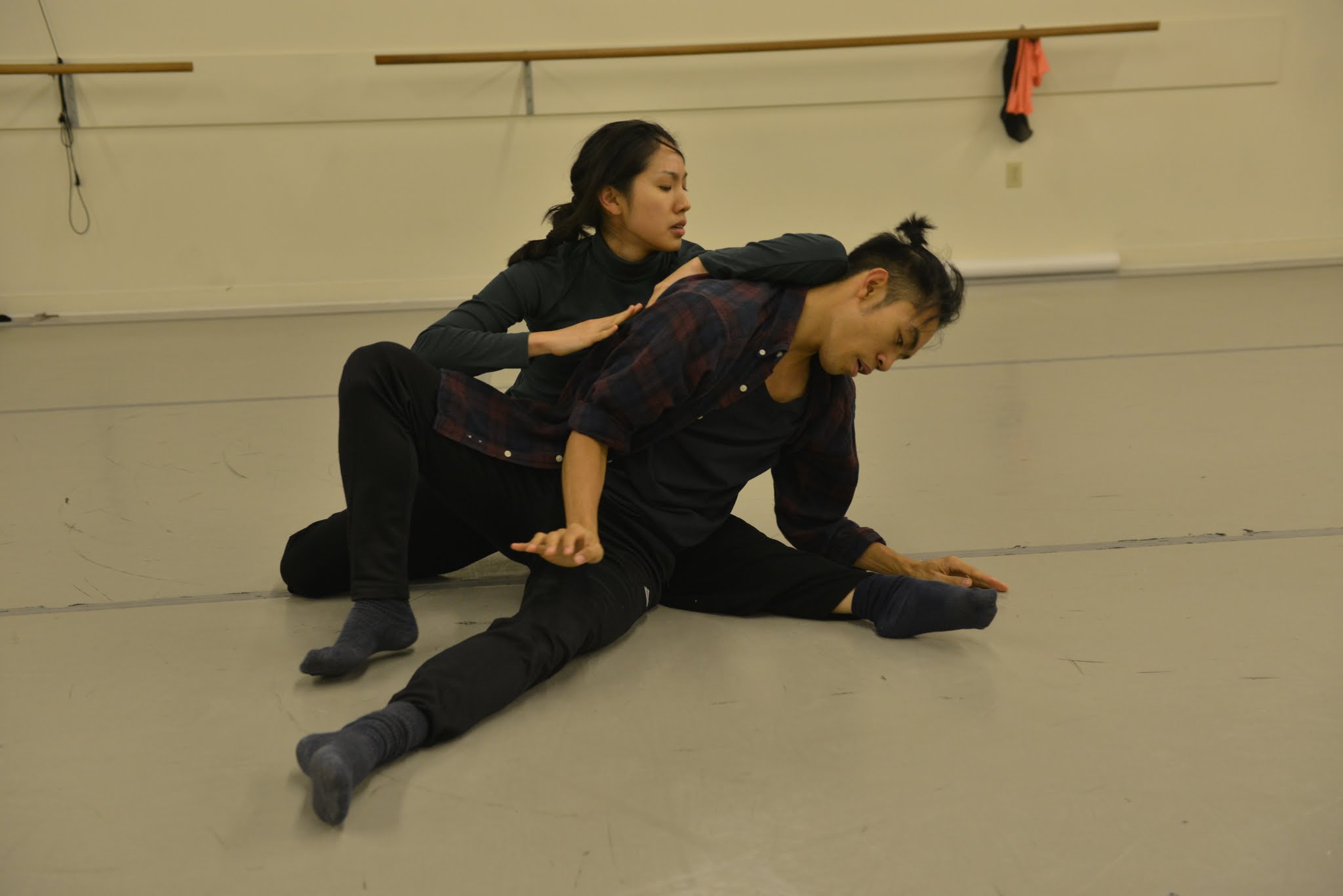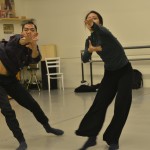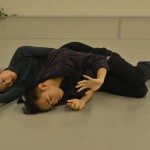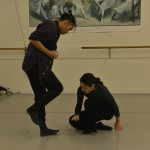For an artist, the experience of initiating his or her own creative ideas and working through their own processes is valuable, regardless of whether or not they feel compelled to continue to choreograph. In GroundWorks’ first-ever Dancer ChoreoLab Showcase, to take place on November 10, company dancers will present new and exciting work.
“One gains a very different perspective from the front of the room,” says Artistic Director David Shimotakahara. “Fundamental to the GroundWorks creative DNA, our artists are constantly involved with helping to generate new work, where they are exposed to and called on to work with a huge range of creative processes.”
Company dancer Stephanie Terasaki will be showcasing a duet called Painting a Half-formed Whole, with fellow dancer Michael Marquez. The piece examines how two people occupy, support, and at times, watch from afar in each other’s gaps and spaces. We spoke with Stephanie about her new piece, Painting a Half-formed Whole.
Tell us about your new work, Painting a Half-formed Whole.
“The pending title of the piece is Painting a Half-formed Whole. I say ‘pending’ because I feel like there’s a better title out there, but I don’t think I’ll be able to figure it out before the showing. It’s a short duet choreographed to a song by Beck.”
Where did you find inspiration for this new piece?
“I was interested in exploring a kind of relationship where these two people are neither strangers nor friends, but somehow they’re involved in each other’s spaces in different shapes and form. It’s not supposed to be a romantic duet, but it’s definitely not an antagonizing duet either. I wanted to keep the relationship between these two ambiguous so the audience can insert their views and interpretation of who these people are and what their relationship is to each other.”
Why is it important for dancer to have an opportunity to create their own work?
“I believe allowing dancers the opportunity to choreograph is such a great way for us to grow as dancers and artists. Not only do you get to experience what it’s like to be in a position of a choreographer,’ it really makes you appreciate the craft in making a piece and it also allows you to explore a different kind of creativity that you don’t always get to exercise as a dancer. You come out of the process learning more about yourself not just as a performing artist, but as a person. Such as, ‘How am I communicating my ideas and movement?’ and ‘Where and what my values are in this work?’ and ‘What is the aesthetic that I’m looking for?’”
How is this particular work stretching you as an artist?
“To be completely honest, I fear choreographing. Haha. I know! You’re probably like, ‘Then why are you choreographing?’ But I think that’s exactly why I wanted to do it. I guess I wanted to challenge myself and see how far I can go in my ‘discomfort’ zone. And so far, the creative process has been great. What’s nice is that there’s so much time and liberty to literally do whatever you want. Certain days, maybe you get a small part done and other days, you get a huge chunk done, and maybe another day you just spend the whole time making edits here and there. The best part of it all is that, you don’t need a finished product; it’s all about the process. There’s no pressure to deliver a fully developed piece.”




